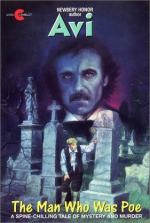|
This section contains 1,080 words (approx. 3 pages at 400 words per page) |

|
Point of View
The Man Who Was Poe is written in the third-person omniscient narrative style. Although the novel is historical fiction, the omniscient narrator does not have a historical point of view. The story is written as if 1848 were the present day. Thus, rather than approaching the story from a historical point of view, the author immerses the reader into living history. This approach is a wonderful way of engaging young readers and allowing them to experience first-hand what life was like in the nineteenth century. The period piece effect of the narrative brings home both the similarities and differences between early America and the modern day. Much of the viewpoint focuses on the young protagonist, Edmund Brimmer, and through his character modern-day children can more easily relate to the different world portrayed within these pages.
The omniscient narrator follows Edmund's train of thought while young Edmund struggles...
|
This section contains 1,080 words (approx. 3 pages at 400 words per page) |

|




